Interchangeable
focusing
screens
A feature Nikon cannot claimed to be the originator, but it was left out from the
features list of Nikon FM in 1977. It was first used in the 1978's electronic Nikon
FE and for many years, often kept many Nikon users wondering why wouldn't the the
mechanical FM enjoys similar benefits as with the electronic counterpart. The feature
was finally included in the Nikon FM2 in 1982 but shown little effort in the design
as it shared the old Nikon FE's 3 original screens of Type K, B and E. When the Nikon
FA and Nikon FE2 were introduced barely a year later in 1983, both bodies came with
a new focusing screens that Nikon claimed would boost one stop in brightness. If
you own a lot of lenses of various types like zoom, macro, ultrawides, reflex etc..
and would like to only keep one screen in your bag. Type B could be a good choice.
For copying work, architectural stuffs or do a lot of creative multiple exposures
images, Type E with the horizontal and vertical grids is a better choice.
 |
Multiple exposures ? |
Yeap, each rectangle inside can help you registering earlier shots or the nest exposure of where it should falls, may come in handy at times. Illustration at left is a double exposure shot with the moon being exposed at a pre-positioned composition of where I want it to be. The 3 types of new screens can also be used on older bodies of Nikon FE and the original FM2 but must adjust the compensate metering to around 1/3 stop (Similarly, old screens can be used on FE2, FA and the FM2n with appropriate exposure compensation).The Type K2 screen comes with all these cameras as a standard accessory. Two optional focusing screens, Type B2 (matte/Fresnel with focusing spot) and Type E2 (matte/Fresnel with focusing spot and etched grid lines) are also available for the FM2(n) to match any specific requirements.
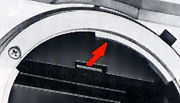 |
To change focusing screens, follow this procedure: 1. Remove the lens from the camera body. 2. Slip the small tip of the special tweezers (that come with the optional screens) under the focusing screen release latch at the top front of the mirror box casting and pull outward to spring open the holder. |
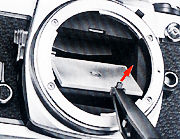 |
3. Take the screen out by grasping the small tab with the tweezers. 4. Carefully position another screen in place with the flat side facing down and the side with the tab facing up. 5. Then push the front edge of the holder upward with the tweezers until it clicks into position. |
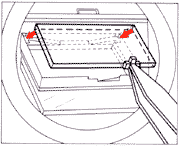 |
Note: To avoid getting smudges or fingerprints on the screen's optical surface, do not handle the screen with your fingers. Well, I know the few few attempts you might follow the rules and make good use of the tweezer supplied to change focusing screen. Anyway, I don't think you will have the patience and eventually will revert to use fingers later. Anyway, JUST BEAR IN MIND - handle these task with great care, that is all.
|
Screen Type |
Name and Style |
Features |
|
|
Split-image range finder/microprism system |
Suitable for general photography Has microprism collar around the central split-image rangefinder spot With PC Nikkor or lenses having a maximum aperture slower than f/4.5, the split-image rangefinder or microprism collar is dim In this case, focus on the surrounding matte area. |
|
|
matte system |
Works well for general photography, close-up photography and duplication work. Especially useful for people who prefer to focus on the matte focusing spot at the center of the screen, or when it is inconvenient to use the split image rangefinder for focusing, as is the case with telephoto lenses. |
|
|
Horizontal
|
Extremely useful in pictorial composition Consists of Type B2 matte field with etched horizontal and vertical lines Also useful with PC Nikkor Lenses |
 |
 |
To differentiate both types of screens, just check this: Type K/B/E screens have a straight tab. Type K2/B2/E2 screens have a notched tab. Credit: "DON" <bluemtn@cyburban.com> for helping in identifying a mistake made with the images. |
| Type K screen | Type K2 clear-matte screen |
Caution: Unlike electronic Nikon bodies such as FE, FE2 or the FA, where you can make use of the exposure compensation dial; but for any of the FM series models, you can considered to use the film speed setting by adjusting it -1/3 stop) (More info and suggestion on focusing screens). However, no exposure compensation is necessary when performing TTL auto flash photography with a Type K/B/E screen installed in the FE2 or FA.
Still confused ?
|
Camera models |
Screen type |
Exposure adjustment |
Screen type |
Exposure adjustment |
|
FE, FM, and original FM2 |
K |
- |
K2 |
+ 1/3 stop |
|
B |
- |
B2 |
+ 1/3 stop |
|
|
E |
- |
E2 |
+ 1/3 stop |
|
|
FA, FE2, and FM2n/FM2T |
K |
- 1/3 stop |
K2 |
- |
|
B |
- 1/3 stop |
B2 |
- |
|
|
E |
- 1/3 stop |
E2 |
- |
Note: These are suggested compensation values published by Nikon on the little leaflet that came with the optional screen, please use it only as a reference. More more precise results, try to perform a test on your own to find the best combination.
How to clean Focusing Screens This section is applicable only to the focusing screens for NIkon mid-compact bodies, which are made of acrilan. The split image section has always be the most troublesome to clean. Unlike those screen made of optical glass like those designed for Nikon F3 or any of the professional F-series cameras, they are very difficult to removed.
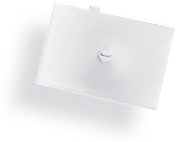 |
 |
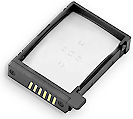 |
<<-- Focusing screen for FM2(n) (Far LEFT) and those made for the Nikon F3 (Center) , F4 and F5 are different, So does the handling and cleaning method |
To avoid getting smudges or fingerprints on their optical surfaces; As a general cleaning, simply use a brush or blower brush to remove external dust. However, when the screens are smudged or printed by mistake, clean them carefully with a cleaning tissue soaked with the adequate liquid listed below. In this case, do not rub focusing screens strongly, because they are prone to be easily damaged.
Liquid/Agent |
Remarks |
Freon (CCl2F2) |
Excellent |
Lens cleaner (on the market) |
Excellent |
Ethyl Alcohol (C2H50H) |
Acceptable |
Methyl Alcohol (CH3OH) |
Unacceptable |
Ethy1 Ether ( (C2H5)2O) |
Unacceptable |
Thinner ( on the market) |
Unacceptable |
Is your camera confined to use only Nikon made screens ?
No. There are third party screen as well. A company in US, Fresnel Optics are providing some alternatives for focusing screen other than the SIX (3 x older; 3 x newer) offered by Nikon. It was a company primarily engaged in the development, design and manufacture of precision micro structured optics. In 1997 in a corporate move to acquire Beattie Intenscreen, a company focuses solely on producing focusing screens for cameras. Located in Rochester, NY, Fresnel Optics now extends to produce more screens and varieties for many popular 35mm medium and even large format cameras.
|
|
|
|
|
|
Plain ( 82120) |
Grid ( 82121) |
(H) Split Image Plain ( 82130) |
Third Party Focusing Screen designed for Nikon FE, FA, FM2, FM2(n), FE2 @ $79.95 a piece. |
|
|
|
|
|
|
(H) Split Image Grid ( 82131) |
(D) Split Image Plain ( 82132) |
(D) Split Image Grid ( 82133) |
The company claims screens made by them are generally range from a stop brighter than most camera manufacturer, you can buy online if you wish or write to them at: Fresnel Optics, Inc.- Beattie Intenscreen. 1300 Mt. Read Boulevard, Rochester, NY 14606 USA (716)647-1140 Fax: (716) 254-4940. Beattie Intenscreen usually has a fresnel lens design, made from optical grade acrylic, the fresnel lenses are optically engineered to concentrate and redirect light (and the image) to the exact position of the eye where it claims traditional ground glass-type focusing screens simply act as a surface for viewing the image and don't effectively utilize all of the available light, resulting in a dim image with little contrast. In addition, the screens made by Intenscreen go through a a special chemical coating and curing process adding even more brightness. According to them, the exclusively developed manufacturing process has also been patented. Personally, I have no experience dealing with such screen. Neither I have any eyesight problem, my lenses are adequately bright in the viewfinder and I don't think the price justify for a change. As I noticed from the site the screen is retailing at US79-95 per piece and when called for a quote from my local distributor for Nikon's original screen, they would sell me at RM45-00 (Used to be at RM15.00 a piece 15 years ago..). I thought that was excessive... (As at May 2000, exchange rate fixed at US$1-00=RM3.80 under Our country currency exchange control). That means an original screen is only selling at below US12-00 a piece as compared with Beattie Intenscreen retail price of US$79.95...
macroClose-up equipment and accessories Macro and close-up photography has always been where Nikon photographic system strength is. The macrophotography group is designed as a standalone system and virtually I don't see any possible incompatibilities exist between Nikon FM2(n) and all those macro accessories. Below listed are some handy and easily available accessories you can use for close-up photography.
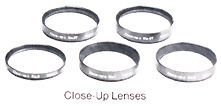 |
1) Close-up Lenses No. 0, No. 1, No. 2, No. 3T, No. 4T, No. 5T, No. 6T. |
Since these lenses work like filters and they are designed to attach to the front of the primary lens in use, metering can still be done at full aperture. This is the cheapest way to gain magnification among all possibilities. Highly portable is another clear advantage. 2) Auto Extension Rings PK-11A, 12 and 13. These are extension tubes that designed to fit between camera and lenses to increase the magnification ratio of lenses. The inconvenient part is, you have to move forth and back to adjust focus. Unfortunately, a zoom lens type of extension ring is not available to enable variable extension.
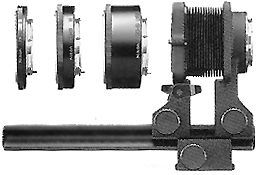 |
|
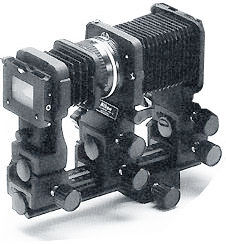 |
The Auto Extension Rings and the PB-6 are attached between the lens and camera body. If one of the rings is used with an Al lens, exposure determination is at full aperture because the exposure meter is linked to the automatic diaphragm of the lens. As for the PB-6, stop-down exposure measurement is necessary because the exposure meter is not linked with the automatic diaphragm of the lens. However, you can change magnifications continuously by extending the bellows.Note: It is possible to use a close-up lens, ring and the PB-6 all at the same time. |
4) If you put mobility on top of your priority list, invest into a all round micro-Nikkor lens. These specialized close up lenses has long been enjoying a fine reputation as being top optical performers since the mid-50 during the Nikon rangefinder days. There are few popular focal length such as 50-60mm range best represented by the manual focus Micro-Nikkor 55mm f/2.8 and AF Micro-Nikkor 60mm f/2.8D. The mid range telephoto focal length of 105mm, you can select either the manual focus Micro-Nikkor 105mm f/2.8 or for a longer reach, the Micro Nikkor 200mm f/4 IF. Both of these focal length have similar offering with an AF alternative, which is AF Micro Nikkor 105mm f/2.8D or AF Micro-Nikkor ED 200mm f/4D IF. A recent inclusion is a special macro zoom lens, the AF Zoom-Micro Nikkor 70-180mm f/4.5-5.6D ED lenses. Also check the NIKKOR LENSE RESOURCES Section for other older/Newer Micro-Nikkor lenses.
 Micro-Nikkor 55mm f/2.8 |
 Micro-Nikkor 105mm f/2.8 |
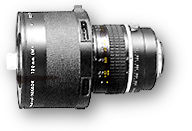 |
|
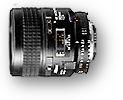 AF-D
Micro-Nikkor 60mm f/2.8 AF-D
Micro-Nikkor 60mm f/2.8 |
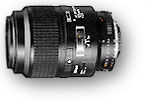 AF-D Micro-Nikkor 105mm f/2.8 |
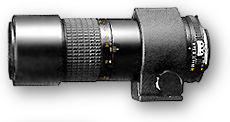 |
These specially designed lenses for close-up photography offer continuous focusing from infinity down to 1:2 (Micro-Nikkor lenses), 1:1 life-size (AF Micro-Nikkor lenses) or 1:1.3 (AF Zoom-Micro Nikkor lens). The closest focused distance of the lenses are 0.25m (0.82 ff.), 0.23m (0.75 ff.), 0.41m (1.34 ff.), 0.219m (0.719 ff.), 0.314m (1.03 ff.), 0.5m (1.64 ff.) and 0.37m (1.2ff.), respectively.
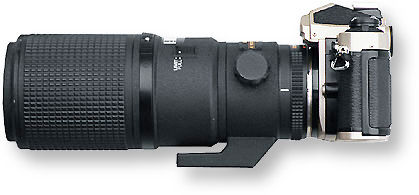 |
Note: In close-up photography, the depth of field is generally shallow. Thus, you should stop down as much as possible in photographing a subject with very little depth. |
Also, it is advisable to use the Type K2's matte outer field for focusing (or to change focusing screens) because it is no easy to focus with the split image or microprism ring. Can the FM2 series model use earlier non-AI micro Nikkor lenses ? No. But you can request for AI-modification from reputable service centers Alternatively, earlier AI or AIS version of Micro Nikkor lenses such as my previous favorite, the Micro-Nikkor 105mm f4.0 offers equally extremely high image quality but possibly at a more economical costing. Note: Although these lenses are termed to be 'specialized' for macro photography but they can also act as a normal telephoto lens which making them an even more attractive alternatives as these flexible lenses can offer continuous focusing all the way from infinity to life size (1:1) reproduction !
| Previous | Next | Motor
Drive, Remote, Film backs, general accessories and specifications
| Back | Index
Page of Nikon FM2(n) Instruction Manual
| Back | Main Index
Page of Nikon FM series Bodies
| Message Board | for
your favourite Nikon
FM Series SLR models
| Message
Board | for your Nikon
Optics in a shared environment
| Message Board | Specifically for Dispose or Looking for Nikon/Nikkor
Photographic Equipment
Standard
production Nikon FM Series models:-
Nikon FM | Nikon FM2 | Nikon FM2n | Nikon FM10 | Nikon FM3a |
Known
variants:-
Nikon
FM Gold
| Nikon
FM2/T
| Nikon
FM2N Tropical Set
| Nikon
FM2/T Limited Edition
| Nikon
FM2N LAPITA
|
Nion
FM2n Millennium 2000
Shared Resources: MD-11 | MD-12 | Focusing Screens | Titanium Shutter | Flash Units -SB-16 | SB-15 | SB-10 or other Options | Databack | Nikkor lens mount (related info)
Others:- Nikon AF-TTL Speedlights | SB-20 (1986) | SB-22 (1987) | SB-23 | SB-24 (1988) | SB-25 (1991/2) | SB-26 (1994) | SB-27(1997) | SB-28 (1997) | Nikon SB-29(s) (2000) | Nikon SB-30 (2003) | Nikon SB-600 (2004) | Nikon SB-800 (2003) Nikon AF-TTL Speedlight DX-Series: Nikon SB-28DX (1999) | SB-50DX (2001) | SB-80DX (2002)
Nikon
BC-flash Series |
Original
Nikon Speedlight
SB-2
| SB-3
| SB-4
| SB-5
| SB-6
| SB-7E
| SB-8E
| SB-9
| SB-E
| SB-10
SB-11
| SB-12 | SB-14 | SB-140 UV-IR| SB-15 | SB16A | SB-17 | SB-18, SB-19 | SB-21A (SB-29) Macro flash | Flash Accesories | SF-1
Pilot Lamp
Instruction
Manual: Nikon FM (HTML | PDF) | Nikon FM-10 (HTML) | Nikon FM2n's
User's Manual
available only in HTML format (6
parts) | Nikon
FM3A
(HTML)
Specifications: Nikon FM, FM-10, FM2, FM2n and FM3A / Main
Reference Map: (HTML) Nikon FM, FM2, FM-10, FM2n (Applicable
to FM2T, FM2 "Year of the Dog"; Millennium 2000") and Nikon FM3A
| Nikon F | Nikon F2 | Nikon F3 | Nikon F4 | Nikon F5 | Nikon F6 | Nikkormat / Nikomat | Nikon FM | Nikon FE/ FA | Nikon EM/FG/FG20 | Nikon Digital SLRs | Nikon - Other models |
Nikon Auto Focus Nikkor lenses:- Main
Index Page
Nikon Manual Focus Nikkor lenses:- Fisheye-Nikkor Lenses - Circular | Full Frame |
Ultrawides Lenses - 13mm15mm18mm20mm | Wideangle Lenses - 24mm28mm35mm | Standard Lenses - 45mm 50mm 58mm | Telephoto
Lenses - 85mm105mm135mm180mm & 200mm | Super-Telephoto Lenses - 300mm 400mm 500mm 600mm 800mm 1200mm |
 Index Page |
Special
Application lenses: Micro-Nikkor Lenses - 50mm~55mm -60mm 85mm -105mm 200mm Micro-Zoom 70-180mm Perspective Control (PC) - 28mm 35mm PC-Micro 85mm Dedicated Lenses for Nikon F3AF: AF 80mm f/2.8 | AF 200mm f/3.5 EDIF Depth of Field Control (DC): 105mm 135mm Medical Nikkor: 120mm 200mm Reflex-Nikkor Lenses - 500mm 1000mm 2000mm Others: Noct Nikkor | OP-Nikkor | UV Nikkor 55mm 105mm | Focusing Units | Bellows-Nikkor 105mm 135mm Nikon Series E Lenses: 28mm35mm50mm100mm135mm | E-Series Zoom lenses: 36~72mm75~150mm70~210mm |
MF Zoom-Nikkor Lenses: 25~50mm | 28~45mm | 28~50mm | 28~85mm | 35~70mm | 36~72mm E | 35~85mm | 35~105mm | 35~135mm | 35~200mm | 43~86mm | 50~135mm | 50~300mm | 70~210mm E | 75~150mm E | 80~200mm | 85~250mm | 100~300mm | 180~600mm | 200~400mm | 200~600mm | 360~1200mm | 1200~1700mm
Tele-Converters: TC-1 | TC-2 | TC-200 | TC-201 | TC-300 | TC-301 | TC-14 | TC-14A | TC-14B | TC-14C | TC-14E | TC-16 | TC-16A | TC-20E
Recommended links to understand more technical details
related to the Nikkor F-mount and production Serial Number:
http://rick_oleson.tripod.com/index-153.html by: my
friend, Rick Oleson
http://www.zi.ku.dk/personal/lhhansen/photo/fmount.htm by: Hansen,
Lars Holst
http://www.mir.com.my/rb/photography/hardwares/nikonfmount/lens2.htm
http://www.photosynthesis.co.nz/nikon/serialno.html
W A R N I N G: The New G-SERIES Nikkor lenses have no aperture ring on the lens, they CANNOT ADJUST APERTURES with any of these manual focus Nikon FE series SLR camera models; please ignore some portion of the content contained herein this site where it relates.
|
Back | Main Index Page of Nikkor Resources
|
Back | Main Index Page of Pictorial
History of Nikon SLRs
| Message Board | for your Nikkor optics ("shared" because I do wish some of you to expose to other's perspective as well. Isn't it a sad sate to see photography has to be segmented into different camps from the use of various labels)
about this photographic web site
Home - Photography in Malaysia |
Credit: To all the good people who has contributed their own experience, resources or those who are kind enough granting us permission to use their images appeared in this site. Mr. MCLau®, who has helped to rewrite some of the content appeared this site. Chuck Hester® who has been helping me all along with the development of all these Nikon websites;LarsHolst Hansen, 'Hawkeye' who shares the same passion I have; Ms Rissa, Sales manager from Nikon Corporation Malaysia for granting permission to use some of the official content; TedWengelaar,Holland who has helped to provide many useful input relating to older Nikkor lenses; Some of the references on production serial numbers used in this site were extracted from Roland Vink's website; HiuraShinsaku from Nikomat Club Japan. t is also a site to remember a long lost friend on the Net. Note:certain content and images appeared in this site were either scanned from official marketing leaflets, brochures, sales manuals or publications published by Nikon over the years and/or contribution from surfers who claimed originality of their work for educational purposes. The creator of the site will not be responsible for may discrepancies arise from such dispute except rectifying them after verification."Nikon", "Nikkormat", "Nippon Kokagu KK" & "Nikkor" are registered tradename of Nikon Corporation Inc., Japan. Site made with an Apple IMac.
 Type
K2
Type
K2
 Type
B2
Type
B2
 Type
E2
Type
E2







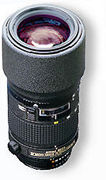 AF-D
Micro-Nikkor zoom 70-180mm EDIF
AF-D
Micro-Nikkor zoom 70-180mm EDIF